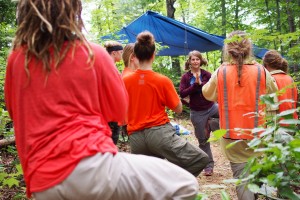February 29, 2016
What’s so Bad About Helicopter Parenting? It’s all about Resilience…

“I can’t.” Probably the two most common words we hear from students at the beginning of their time at Second Nature. It also elicits an understandable reaction of guilt and protection from their parents. In recent years we’ve seen a great deal of media and popular culture scrutiny around the concept of “Helicopter Parenting,” This broadly refers to the idea of parents who are overly enabling or quick to ‘rescue’ their children from challenges or stress. (My other favorite metaphor is the “Snowplow Parent,” who clears the path of all obstacles and struggles.) Most people have an instinctive response to this issue in that we all know helicopter parenting is “bad.” But why? Isn’t our job as parents to protect our children from harm? What caring parent’s first impulse isn’t to help their child when they struggle? And to be fair, sometimes the criticism of helicopter parenting smacks of “back in my day…” hypocrisy, as if our own parents didn’t do everything in their power to make things easier for us and provide a better life than they had!
At the core of the debate over ‘rescuing’ are two opposing goals of parenting—on the one hand to protect our children from harm, on the other to prepare them to be independent young adults. To be healthy young adults they need to have the skills to navigate the challenges of everyday life without others jumping in to make things easier. Yet when we see our children suffering or seeming fragile it feels cruel not to come to their aid. Therein lies the catch-22.
The key to understanding this dilemma is the concept of Resiliency. While most people have an intuitive sense of what resilience means, the clinical dynamics involved are more complex. A common definition of resilience in psychology research is, “The ability to thrive, mature, and increase competence in the face of adverse circumstances.” But this is where the details get interesting: The common misconception is that resiliency is an innate trait that children are either born with or not. That’s why when we see our children “struggling” we assume that they are incapable of handling challenges that appear beyond their ability to tolerate. Jumping in to ease their burden feels like a necessary (even if not desirable) response.
But the truth is that resiliency is not a trait that a youth is born with or automatically keeps once it is achieved. Although innate personality traits can play a role, resilience is a complex interactive process. Children may be resilient in one domain in their lives, but not in others (e.g.,academic, social, self-regulatory behaviors). Children may be resilient to specific risk factors, but quite vulnerable to others. Resilience is a multidimensional phenomenon that is context-specific and involves developmental change. It should be viewed as being fluid over time. The relative importance of risk and protective factors are likely to change at various phases of life. A child who is resilient at one developmental phase may not be necessarily resilient at the next developmental phase.
When we look at the research on resilient children, a few common factors emerge. Below are some of the family and individual characteristics associated with increased resiliency:
| Family Characteristics | Individual Characteristics |
|---|---|
|
|
The exciting thing about the above list of characteristics is just how many of them are subject to change! When we work with students at Second Nature, we have the privilege of being able to assist students in the development of these skills. We know it’s not always easy to shift ingrained patterns, but with the proper intervention we can see a dramatic shift in each of those domains. Whether from a formal therapy session, learning to tackle a difficult homework assignment, navigating a challenging hike, sharing a vulnerable assignment in group, or creating fire with a bow drill set, there are countless opportunities to affect those components known to impact resiliency the most. Experience has taught us that these changes are even more profound within the context of the nomadic model, and in the colder months, where self-efficacy skills are of even greater importance.
The result is a child who is emboldened to persist through challenges rather than shy away from them. The transformation from “I can’t” to “I can” is reflected in enormous pride (and usually even bigger smiles). As parents begin to see their child as capable rather than fragile, and view challenges as opportunities to grow rather than threats to be protected against, the cycle of “rescuing” is more easily broken and the path toward healthy independence established.



